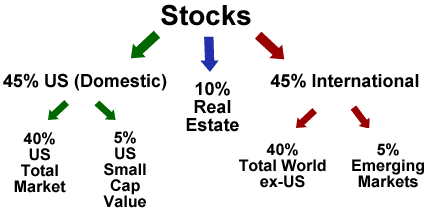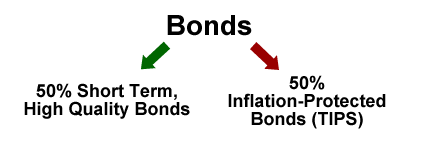 Savingforcollege.com is a popular privately-run site for researching and comparing 529 college savings plans. In June 2012, they updated their rating system which represents their “opinion of the overall usefulness of a state’s 529 plan based on many considerations.” The judgement criteria include:
Savingforcollege.com is a popular privately-run site for researching and comparing 529 college savings plans. In June 2012, they updated their rating system which represents their “opinion of the overall usefulness of a state’s 529 plan based on many considerations.” The judgement criteria include:
- Performance. They selected similar “apples-to-apples” portfolios with 7 different asset allocations from each plan and rated them based on historical performance. Rankings are updated each quarter.
- Costs. Total average asset-based expense ratios among plans are compared, in addition to separately considering program manager fees, administrator fees, and annual account maintenance fees.
- Features. This includes other factors that affect participants, including the ability of the plan change their investment options quickly if called for; creditor protection under the sponsoring state’s laws; availability of FDIC-insured options; minimum and maximum contribution restrictions.
- Reliability. The appears to measure the likelihood of a good plan staying a good plan. Do they have experienced program managers? Does the plan have a good amount of assets? What is the quality of the documentation and reporting? How restrictive are the withdrawal and rollover processes?
Here is the full list of 5-Cap Ratings for each state, on a scale of 0 to 5 Caps. Note that there are separate ratings for in-state and out-of-state residents. Out of the 100+ different plans they rated, here are the 8 programs available directly to the public that attained the top 5-Cap Rating for out-of-state residents (alphabetical order):
- California: The ScholarShare College Savings Plan
- Maine NextGen College Investing Plan – Direct Plan
- New York’s College Savings Program – Direct Plan
- Ohio CollegeAdvantage 529 Savings Plan
The following plans received a 5-Cap Rating for in-state residents:
- California: The ScholarShare College Savings Plan
- Colorado: Direct Portfolio College Savings Plan
- Colorado: Scholars Choice College Savings Program – Advisor Plan
- Illinois: Bright Start College Savings Program – Direct Plan
- Iowa: College Savings Iowa
- Maine: NextGen College Investing Plan – Direct Plan
- Maine: NextGen College Investing Plan – Advisor Plan
- Michigan: Michigan Education Savings Program
- Nebraska: Nebraska Education Savings Trust – Advisor Plan
- Nebraska: Nebraska Education Savings Trust – Direct Plan
- New York: New York’s College Savings Program – Direct Plan
- Ohio: Ohio CollegeAdvantage 529 Savings Plan
- Rhode Island: CollegeBoundfund – Direct Plan
- South Carolina: Future Scholar 529 College Savings Plan – Advisor Plan
- South Carolina: Future Scholar 529 College Savings Plan – Direct Plan
- Utah: Utah Educational Savings Plan (USEP)
- West Virginia: SMART529 WV Direct College Savings Plan
- Wisconsin: Edvest
The SavingForCollege Top-rated 5-Cap plans are slightly different than the Morningstar Top-rated Gold plans. However, in general the top 20 or so plans are pretty much the same. Remember to consider your in-state plan first for potential tax advantages.

 According to the
According to the 


 If you shop regularly at Target, then you’ve been pitched the
If you shop regularly at Target, then you’ve been pitched the  Target recently announced a new “Holiday Price Match” policy that will let you price-match with select online stores between November 1st and December 16, 2012. Full details are to be released on October 22 at target.com/morereasons, but for now the qualifying retailers will include Amazon.com, Walmart.com, BestBuy.com and Toysrus.com. Target is even offering free WiFi now in all stores to aid your price-matching activities. (
Target recently announced a new “Holiday Price Match” policy that will let you price-match with select online stores between November 1st and December 16, 2012. Full details are to be released on October 22 at target.com/morereasons, but for now the qualifying retailers will include Amazon.com, Walmart.com, BestBuy.com and Toysrus.com. Target is even offering free WiFi now in all stores to aid your price-matching activities. ( Updated. American Express has a product called Serve – a combination of their prepaid credit card and a Paypal-like online payment service. No credit checks, no monthly fees, and one free ATM withdrawal per month (the ATM itself may charge a fee).
Updated. American Express has a product called Serve – a combination of their prepaid credit card and a Paypal-like online payment service. No credit checks, no monthly fees, and one free ATM withdrawal per month (the ATM itself may charge a fee). New inflation numbers were just released for September 2012, so here’s the usual semi-annual update.
New inflation numbers were just released for September 2012, so here’s the usual semi-annual update.  The Best Credit Card Bonus Offers – March 2024
The Best Credit Card Bonus Offers – March 2024 Big List of Free Stocks from Brokerage Apps
Big List of Free Stocks from Brokerage Apps Best Interest Rates on Cash - March 2024
Best Interest Rates on Cash - March 2024 Free Credit Scores x 3 + Free Credit Monitoring
Free Credit Scores x 3 + Free Credit Monitoring Best No Fee 0% APR Balance Transfer Offers
Best No Fee 0% APR Balance Transfer Offers Little-Known Cellular Data Plans That Can Save Big Money
Little-Known Cellular Data Plans That Can Save Big Money How To Haggle Your Cable or Direct TV Bill
How To Haggle Your Cable or Direct TV Bill Big List of Free Consumer Data Reports (Credit, Rent, Work)
Big List of Free Consumer Data Reports (Credit, Rent, Work)